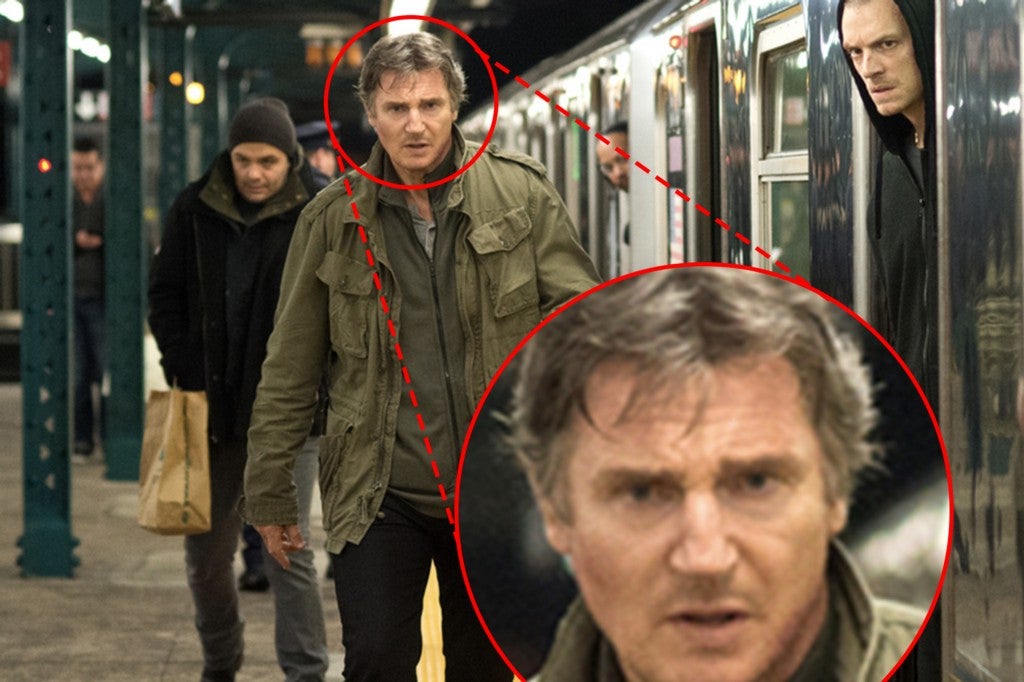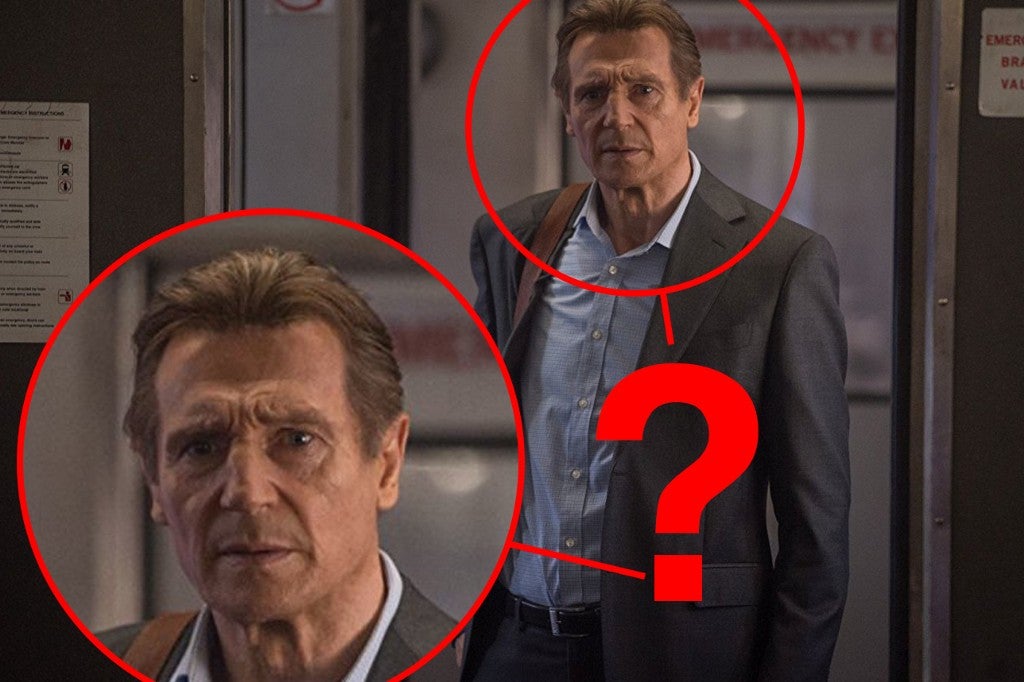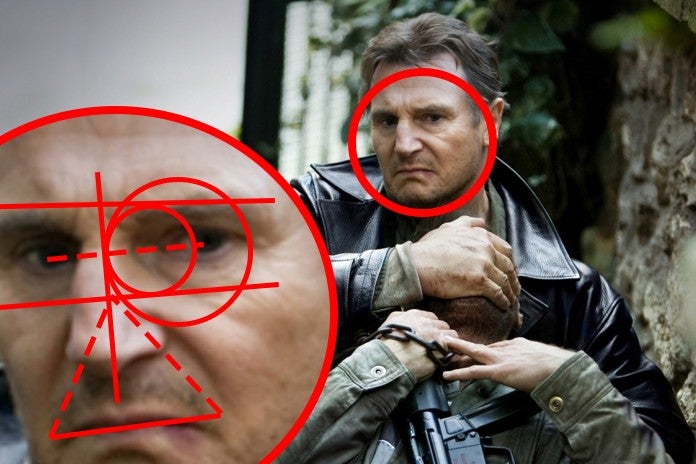We’re now in the 10th year of what once seemed like a totally bizarre career reincarnation: After decades of being a respected dramatic actor, Liam Neeson changed course, becoming an ass-kicking, middle-aged action hero. Since Taken hit theaters in January 2009, Neeson has occupied a cinematic space once occupied by everyone from Steve McQueen to Clint Eastwood to Charles Bronson — that of the taciturn, lone-wolf tough guy out for vengeance. No matter how predictable these movies (and that character archetype) are, there’s also something incredibly comforting about them. The world is collapsing into chaos, but at least on screen we know that Neeson will always kill the bad guys.
If only everything in life was so reliable.
The Commuter is his latest, and it’s as good or bad as his other recent efforts, including Non-Stop and Run All Night. (The only truly great movie he’s made in this mold is 2012’s The Grey, an emotional character drama in which he has to battle freezing conditions, hungry wolves and the raging grief of losing his wife.) He plays Michael, a downsized insurance salesman (and former cop!) who on his train ride home is railroaded by a beautiful stranger (Vera Farmiga) into tracking down a mystery passenger — if Michael doesn’t comply, his family will be killed. The setup is Hitchcock-lite, the effects are cheesy and the whole thing gets increasingly dopier as it hurdles along. In short, it’ll be a perfectly decent viewing option on a plane six months from now.
If you’ve seen any of Neeson’s recent movies, though, none of that will surprise you. So let’s dig a little deeper: Here are my three takeaways from The Commuter…
#1. Liam Neeson makes the best action-hero faces.
If you’re going to save the world, you’d better be rocking the right expression while doing so. Most action heroes make the same face while shooting the bad guys or jumping out of an exploding building — basically, it’s The Statham. Neeson sorta makes that face, but while watching The Commuter, I realized that he brings his own twist to it — and maybe that’s the secret to his success.

Where your Bruce Willis or Dwayne Johnson looks tough and manly while kicking ass, Neeson just seems grumpy. Sure, his characters are put into harrowing situations that any normal person couldn’t possible hope to survive, but that’s not what’s provoking Neeson’s expression. In The Commuter, like in his earlier movies, he always just seems so disappointed in the bad guys. It’s that same look your dad gave you when he told you not to do something stupid and then you did it anyway. Neeson will dependably defeat the villains with his very particular set of skills, but he’s not happy about it at all, young man. (Near the end of The Commuter during one particularly ridiculous action sequence, I could practically hear Neeson thinking, “Why are you fellas acting this way? Why don’t you shape up and fly right?”)

The everyman action movie, which is Neeson’s specialty, has been around for a while, populated by Willis-like regular dudes. In theory, we relate to them because they’re not Schwarzenegger super-humans — they’re more like us regular schlubs. Well, if I were in an action movie, I’d probably act a lot like Neeson does in The Commuter. Like, I’m busy, you know? I don’t have time for this shit.

Neeson’s annoyed-hero face is my Current Mood.
#2. We’re running out of cool places to set action movies.
The Commuter takes place almost exclusively on a New York commuter train, which is a pretty cool setting. Hollywood has served up plenty of single-location action films: We’ve had movies set on buses (Speed), airplanes (Non-Stop), Naval ships (Under Siege), submarines (Crimson Tide) and Air Force One (Air Force One). But I’m concerned we’re starting to run out of fun close-quarters locales.
What options do we have left? Some ideas…
An elevator: I realize Devil is a movie that exists, but c’mon: There wasn’t that much action in that. I’m talking about a whole movie that’s like that incredible elevator fight scene from Captain America: The Winter Soldier. Or better yet, someone like Liam Neeson in a high-rise going from floor to floor fighting people who get on the elevator. Lots of violent potential there.
A locked bathroom: You just needed to use the bathroom during halftime of the Super Bowl and then, bam, you discover the door’s locked from the outside — and now you have to fight your way out of a men’s room filled with elite assassins. Items that could be used as weapons: the hand dryer, the toilet lid, the soap dispensers, the stall doors. It could be called The Facilities.
A moped: It’s Easy Rider meets Speed meets Napoleon Dynamite.
#3. We’re also running out of clever excuses for why characters can’t use their cellphone.
Early on in The Commuter, Michael gets his smartphone swiped, which is part of the bad guys’ insidious plan to control his ability to communicate with the outside world. For years now, action-thrillers and horror movies have had to figure out reasons why their main characters can’t do what most people would do in a terrifying situation — call for help. It’s such a common cinematic convention that it’s almost laughable; in fact, there are whole YouTube montages devoted to that inevitable moment in horror movies when the characters realize they’re not getting reception:
With that in mind, we thought we’d offer our services to Hollywood screenwriters. Here’s a quick ranking, from best to worst, of reasons that movie characters can’t grab their cell. We came up with these in, like, 15 seconds:
1. Character went back in time so, obviously, their phone isn’t going to work.
2. They live in a post-apocalyptic hellscape.
3. They’re in the middle of nowhere and forgot their charger.
4. They’re in the middle of nowhere, and there’s no reception.
5. They’re in that one part of the building where there’s no reception.
6. Solar flares.
7. Dumbass left it at home.
8. Dumbass left it in the car.
9. Dumbass dropped it in the toilet.
10. Character, tragically, was born without fingers, can’t dial phone.
11. Character has hands cut off by chainsaw-wielding lunatic, can’t dial phone.
12. Character starts one of those obnoxiously performative “digital detoxes,” swearing off all devices.
In the last case, the character deserves whatever they get.

